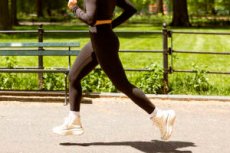New publications
Intense exercise improves bone density in postmenopausal women
Last reviewed: 02.07.2025

All iLive content is medically reviewed or fact checked to ensure as much factual accuracy as possible.
We have strict sourcing guidelines and only link to reputable media sites, academic research institutions and, whenever possible, medically peer reviewed studies. Note that the numbers in parentheses ([1], [2], etc.) are clickable links to these studies.
If you feel that any of our content is inaccurate, out-of-date, or otherwise questionable, please select it and press Ctrl + Enter.

A recent study published in the Journal of Bone and Mineral Research assessed the effects of high-impact exercise on femoral neck bone density and knee osteoarthritis (OA) biomarkers in healthy postmenopausal women.
Osteoporosis (OP) and OA affect millions of people worldwide. Increased bone mineral density (BMD) is associated with a lower risk of OA progression but a higher risk of knee OA. Postmenopausal women are at higher risk of OP due to estrogen deficiency and have a higher prevalence of OA than men. High-impact exercise may increase BMD, but results for postmenopausal women remain mixed. More research is needed to confirm the long-term effects and safety of such exercise on bone and joint health.
The study included women aged 55 to 70 years who were assigned to perform high-impact unilateral exercises on a randomly selected leg (EL) for 6 months. The other leg served as a control (CL). Participants provided informed consent and the study was approved by the ethical committees. Women receiving pharmaceutical treatment for OP, with joint injuries, medical conditions precluding physical activity, body mass index (BMI) above 30 kg/m² and other contraindications were excluded.
Procedures included telephone interviews, baseline tests, DXA scans, and MRI. Participants were randomly assigned to groups and completed an initial supervised exercise session. DXA scans, MRI scans, and ground reaction force data were repeated 6 months later.
Participants performed 50 multi-plane jumps daily for 6 months. Data analysis included t-tests, analysis of variance (ANOVA), and McNemar tests, with a significance level of p < 0.05. A sample size of 30 participants was required to detect changes in femoral neck BMD.
Among the 42 participants, study completion data were available for 35. Average exercise adherence was 76.8%, and 29 participants exercised at least 4 days per week.
After 6 months of high-impact exercise, mean femoral neck BMD increased in EL by 0.81% and decreased in CL by 0.57%. Changes in bone mineral content (BMC) and section modulus (Z) were also recorded. Assessment of knee osteoarthritis biomarkers showed no significant differences between legs.
The study found that 6 months of high-impact unilateral exercise can significantly improve BMD, BMC, and Z in postmenopausal women without negatively affecting knee cartilage or OA progression. These results contrast with previous meta-analyses and indicate that regular progressive loading is effective in improving bone strength in this population.
The study also confirmed that high-impact exercise is a safe and beneficial intervention for improving hip strength in postmenopausal women.
